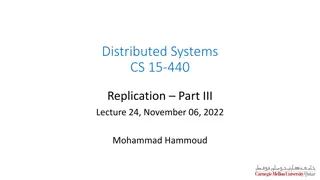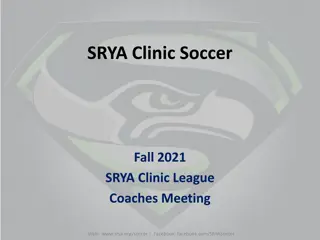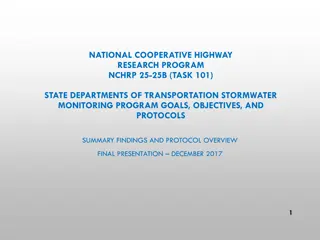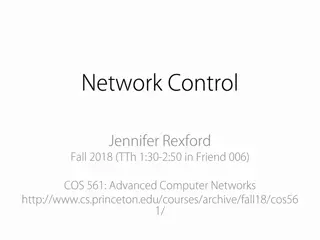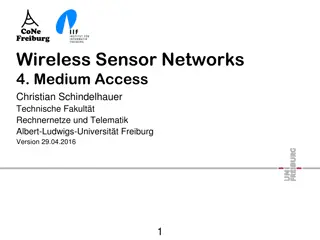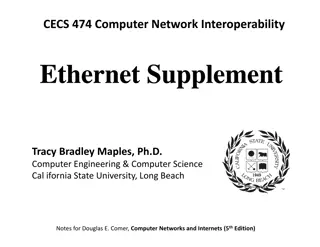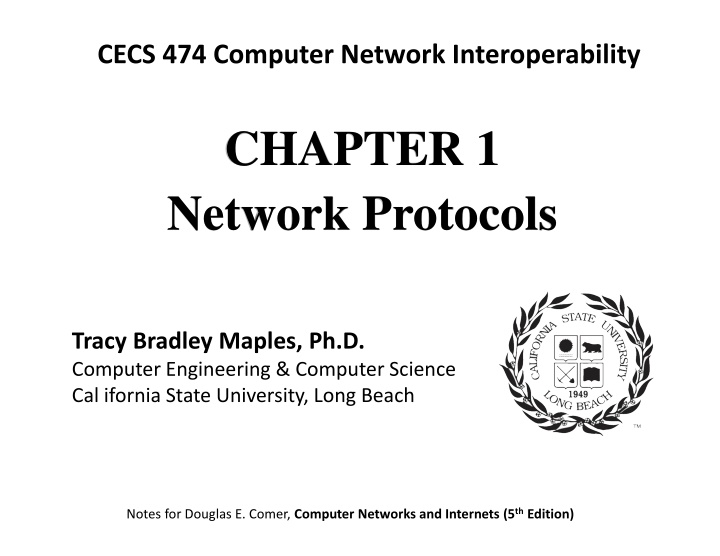
Network Protocols and Layering Models in Computer Networks
Learn about network protocols, protocol suites, layering models, and protocol design in computer networks. Understand how protocols facilitate communication, address hardware-related issues, and organize communication solutions into layers. Explore the OSI 7-Layer Model and the concept of protocol stacks.
Download Presentation

Please find below an Image/Link to download the presentation.
The content on the website is provided AS IS for your information and personal use only. It may not be sold, licensed, or shared on other websites without obtaining consent from the author. If you encounter any issues during the download, it is possible that the publisher has removed the file from their server.
You are allowed to download the files provided on this website for personal or commercial use, subject to the condition that they are used lawfully. All files are the property of their respective owners.
The content on the website is provided AS IS for your information and personal use only. It may not be sold, licensed, or shared on other websites without obtaining consent from the author.
E N D
Presentation Transcript
CECS 474 Computer Network Interoperability CHAPTER 1 Network Protocols Tracy Bradley Maples, Ph.D. Computer Engineering & Computer Science Cal ifornia State University, Long Beach Notes for Douglas E. Comer, Computer Networks and Internets (5th Edition)
Protocol Suites and Layering Models Defn: Protocols are agreements about how communication should take place. They specify: Format of messages Meaning of messages Rules for exchanging messages Procedures for handling problems Network hardware functions at a very low level. Hardware related problems can occur that need to be addressed by protocols: Bits can be corrupted or destroyed Entire packets can be lost Packets can be duplicated Packets can be delivered out of order 2
Protocols can also be used to distinguish among: Multiple computers on a network Multiple applications on a computer Multiple copies of a single application on a computer Sets of Protocols Sets of protocols are designed to work together. Each protocol solves a small part of the communications problem Sets of protocols are known as: -- Protocol Suites -- Protocol families They are designed in layers. 3
Protocol Design Protocols are divided into layers Each layer is devoted to one sub-problem Example: The ISO (International Standards Organization) OSI (Open System Interconnection) 7- layer Reference Model The OSI 7-Layer Model The 7-Layer Model: Was defined fairly early in the development of networks Is now somewhat dated Does not include the internet layer 4
The OSI 7-Layers Layer 1: Physical The underlying hardware Layer 5: Session Login and passwords Layer 2: Data Link (media access) Hardware frame definitions Layer 6: Presentation Data representation Layer 3: Network Packet forwarding Layer 7:Application Individual application programs Layer 4: Transport Reliability 5
The Layering Model Protocol software follows the layering model, with: One software module per layer Modules that work together Incoming or outgoing data passing from one module to another The entire set of protocol layers (or modules) is known as a stack. 6
Layers and Packet Headers Each layer: Prepends a header to the outgoing packet Removes a header from the incoming packet This process is known as data encapsulation. 7
Layering Principle Software implementing layer N at the destination receives exactly the message sent by software implementing layer N at the source. --Comer 8
TCP/IP Layering Notwithstanding the push by researchers to adopt the OSI model, it became clear that TCP/IP was technically more flexible and superior. TCP/IP is the primary protocol stack used today. Note: This TCP/IP layering is an actual implementation of protocols, unlike the ISO model. 9
TCP/IP Layers Layer 4: Transport Specifies how to provide reliable transfer from one application on one computer to an application on another Similar to OSI Layer 4 Layer 1: Physical Basic network hardware Similar to OSI Layer 1 Layer 2: Network Interface MAC frame format MAC addressing Interface between computer and the network (i.e., the NIC) Similar to OSI Layer 2 Layer 5:Application Everything else (i.e., how one application uses the Internet) Similar to OSI Layer 6 and 7 Layer 3: Internet Format of packets Mechanisms for forwarding packets Not in the OSI Model 10



